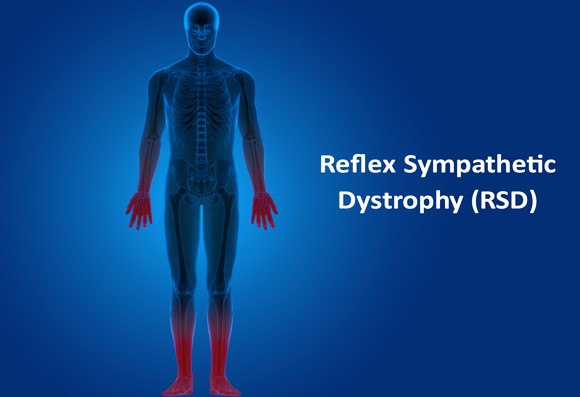Reflex Sympathetic Dystrophy (RSD)
Reflex sympathetic dystrophy is also known as complex regional pain syndrome (CRPS). The condition is characterized by severe pain. Those affected by it will often face many challenges.
What is Reflex Sympathetic Dystrophy (RSD)
Reflex sympathetic dystrophy is a chronic neuro-inflammatory disorder with one of the most severe levels of pain on the McGill University Pain Scale; it scores a 42 out of 50. CRPS is believed to be caused by damage to, or malfunction of, the peripheral and central nervous systems. CRPS 2, the more painful condition, is the result of damage to the peripheral nerves. The central nervous system is composed of the brain and spinal cord, and the peripheral nervous system involves nerve signaling from the brain and spinal cord to the rest of the body.
In any given year, 200,000 people experience this condition in the U.S. The pain occurs when the nervous system and immune system malfunction as they respond to tissue damage. When the nerves malfunction, they send pain signals to the brain. Reflex sympathetic dystrophy can actually be triggered by nerve irritation and degenerative arthritis of the neck as well as traumatic injuries.

Symptoms of Reflex Sympathetic Dystrophy (RSD)
This condition is most often characterized by unexplained moderate-to-severe pain. Some signs that may signal reflex sympathetic dystrophy include:
- Deep, aching pain
- Burning pain
- Abnormal changes in skin color
- Irregular hair or nail growth
- Uncharacteristic sweating of the aching area
- Sensitivity to hot or cold
- Joint stiffness or swelling
- Muscle atrophy
- Muscle spasms
- Temperature changes of the affected limb
Reflex sympathetic dystrophy occurs more frequently in women than men and has been diagnosed in children and adolescents.
Diagnosing Reflex Sympathetic Dystrophy (RSD)
The exact cause of reflex sympathetic dystrophy syndrome is not fully understood. However, injuries to the nerves, trauma, infection, or disorders of the spine that lead to nerve malfunctions have been associated with RSDS/CRPS.
New research suggests that Reflex Sympathetic Dystrophy symptoms may be related to nerve compression. The National Center for Biotechnology Information found that in patients who reported RSD Type 2, the more painful RSD, peripheral nerve compression was present in 86% of the patients, while 50% of the patients had a single nerve compression, and 50% had multiple nerve compressions. Reflex Sympathetic Dystrophy may develop after nerve injury from compression.
Unfortunately, the usual diagnosis for RSD often involves ruling out a compressed nerve. However, compressed peripheral nerves in the spine may contribute to RSD. Pinched nerves occur when surrounding tissues, such as bones, muscles, discal material or tendons, create abnormal pressure on a nerve. Nerve compression can affect any nerve in the body and cause symptoms similar to those found in RSD. Compression of one of the nerves of the spine may cause pain that radiates from the neck, upper back, or lower back to the arms or legs. Other symptoms include decreased sensation, numbness, tingling and muscle weakness. Compression of a spinal nerve can result from a herniated disc, bone spurs, spinal stenosis, or arthritis of the spine.
Since evidence points to nerve compression as a possible cause of Reflex Sympathetic Dystrophy, RSD patients may wish to investigate whether nerve compression is a contributing factor to their RSD symptoms.
Complications
Early diagnosis is important in treating this condition. Failure of diagnosis means the disease could progress and cause muscle atrophy or muscle tightening. Muscle atrophy may occur because a person may avoid moving their limb as a result of pain and stiffness. Failing to use the bone and muscles can cause them to weaken and waste away.
Treating Reflex Sympathetic Dystrophy (RSD)
Treating this condition can be difficult, however, improvement and remission are possible. A combination of different therapies may be necessary. Pain medication is very often prescribed. Physical therapy is one of the many therapies that may be used to alleviate some of the pain.
If you’re experiencing symptoms related to nerve compression near your spine and you believe it may be contributing to your RSD, contact us and one of our surgeons will evaluate your condition and see if the Bonati Spine Procedures can help. Request a no-obligation MRI review or call (855) 267-0482.
